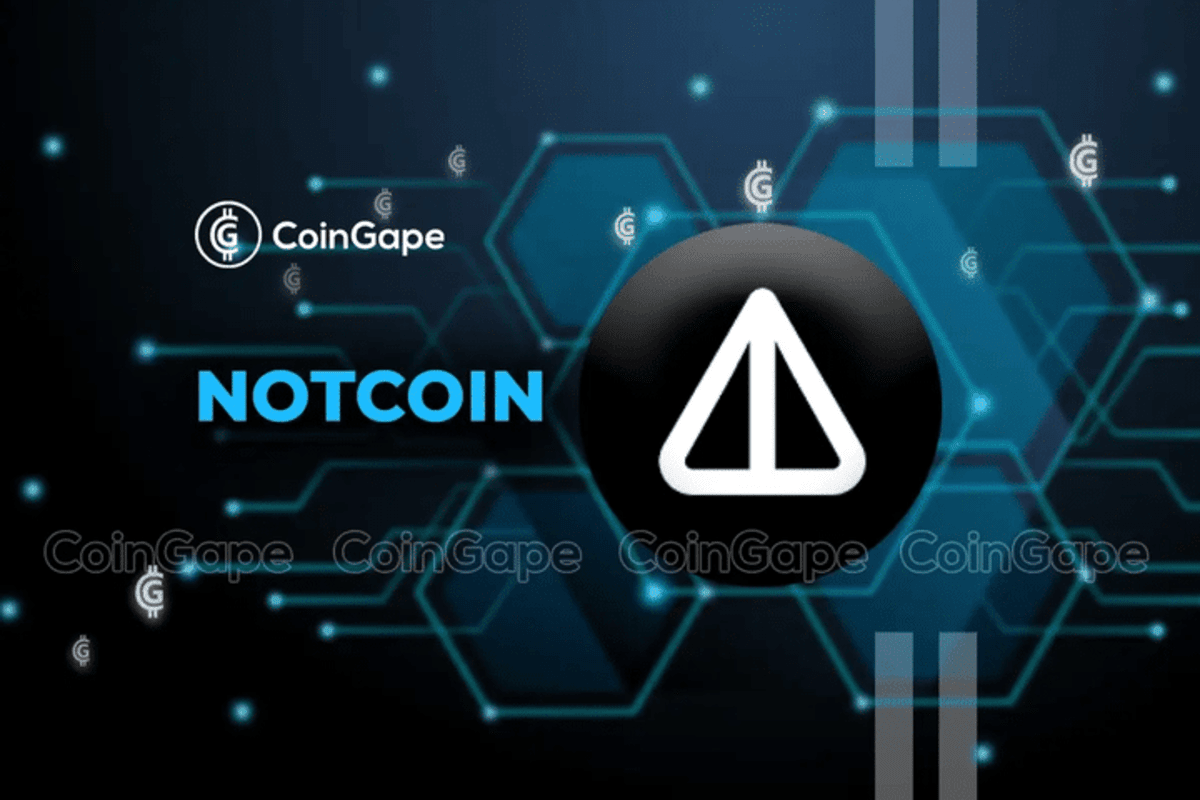USUAL introduces a refreshing take on governance tokens, bridging the often-uneven balance between yield generation and ecosystem growth.

Amidst the burgeoning world of decentralized finance (DeFi), a new class of tokens has emerged, promising to revolutionize the way we think about digital assets. These governance tokens serve as a gateway to shaping the protocols they represent, offering a unique blend of financial incentives and decision-making power. However, many governance tokens in the market today face a common dilemma: they prioritize either yield generation or ecosystem growth, often neglecting the other aspect. This trade-off leaves users yearning for a more holistic approach.
Enter $USUAL, a token that aims to redefine governance token dynamics by converging both yield and governance in a harmonious synergy. Backed by real cash flow and boasting a community-centric distribution, USUAL provides users with the best of both worlds: steady returns and long-term value. This dual benefit stands in stark contrast to the short-lived gains and governance rights typically associated with most governance tokens.
As a unique governance and utility token, USUAL grants holders access to 100% of the protocol’s revenue, thanks to its close ties with USD0. This isn’t just a governance token in name; it grants holders a direct stake in the protocol's financial success. But what truly sets USUAL apart is its ability to grow alongside the protocol, a feature that many governance tokens lack.
As deposits in the protocol increase, USUAL's emission rate decreases. This disinflationary issuance ensures that the token supply doesn’t dilute over time. Instead, it grows in tandem with Total Value Locked (TVL). As a result, each token's value scales with protocol growth, creating a stable foundation for holders.
To further enhance this synergy, 90% of USUAL tokens are allocated to the community, with just 10% going to team members and early investors. This allocation ensures that the community remains the primary beneficiary of the protocol's success. It also protects users from excessive insider influence, creating a fairer, more equitable structure that promotes sustained participation and ecosystem trust.
But USUAL's utility extends beyond governance. Through its staking feature, holders can activate governance rights and earn a portion of newly issued USUAL tokens. These staking incentives, along with a gauge mechanism that helps optimize liquidity distribution, encourage holders to engage actively with the protocol, bolstering long-term stability.
In Q1 2025, a new feature will be enabled, allowing users to burn a portion of their tokens to unlock staked USD0 (USD0 ), enhancing liquidity and flexibility for stakers. This option expands USUAL's utility while balancing supply and demand dynamics within the protocol.
Unlike many governance tokens that simply copy existing models, USUAL's value directly correlates with protocol revenue growth. Its issuance is carefully calibrated to maintain inflation rates below revenue growth, linking token value to tangible cash flows. This structure allows for meaningful, sustained value for those invested in the protocol's long-term vision.
The $USUAL emission model is particularly strategic, designed to control token issuance based on TVL growth and interest rates of assets backing USD0. This structure minimizes inflation, protecting early adopters from dilution while preserving value for long-term holders. By capping emissions and adjusting issuance rates based on TVL growth, USUAL maintains intrinsic value, ensuring that each token represents a growing portion of the protocol's revenue.
This model ultimately benefits users who contribute to protocol growth and underscores USUAL's commitment to fair value distribution. Emission is kept significantly below treasury growth, preventing excessive inflation and aligning incentives within the ecosystem.
Many governance tokens offer limited utility beyond token holding, but USUAL integrates governance and utility seamlessly. Through staking, USUAL holders influence key financial decisions, ensuring that treasury management aligns with the community's vision. This level of transparency and control fosters a sense of ownership and long-term commitment among users.
The protocol's roadmap includes expanded utility, with future implementations offering holders greater access to earnings per token. As TVL increases, the token value naturally increases, directly correlating with the protocol's financial success. The USUAL model is designed to attract long-term participants, encouraging sustainable growth rather than short-term gains.
Overall, USUAL's tokenomics model reflects a sustainable approach, where token supply growth is tied to ecosystem expansion. This prevents excessive inflation and ensures a balanced distribution of rewards to those driving the protocol's success. By aligning governance and utility features, USUAL's framework supports a stable ecosystem for growth and collaboration.
With USUAL, holders gain an opportunity to participate in a governance model that rewards commitment to protocol growth and provides tangible, sustained value. It's a community-focused model that prioritizes users over insiders, setting a new standard for governance tokens.
The above is the detailed content of $USUAL: Where Yield and Governance Converge for a New Era of Tokenomics. For more information, please follow other related articles on the PHP Chinese website!
 The Visionary Leader: Kapil Siwach, CEO of Minati CoinJul 28, 2024 am 03:44 AM
The Visionary Leader: Kapil Siwach, CEO of Minati CoinJul 28, 2024 am 03:44 AMKapil Siwach has been working with blockchain technology for over six years! He's not just the CEO of Minati Coin. He's a mastermind who creates successful business plans that benefit Minati and its users.
 New Crypto Project Intel Markets Enters the Trading Space With New FeaturesAug 29, 2024 am 06:47 AM
New Crypto Project Intel Markets Enters the Trading Space With New FeaturesAug 29, 2024 am 06:47 AMA new crypto exchange, Intel Markets (INTL), has entered the $36.5 billion crypto trading platform space. It wants to transform it using AI technology.
 Intel Markets (INTL): The Next 11x Crypto in 2024?Aug 24, 2024 am 06:10 AM
Intel Markets (INTL): The Next 11x Crypto in 2024?Aug 24, 2024 am 06:10 AMAs the crypto market changes over time, people will always look for new opportunities to earn. One good sign is that a well-known analyst
 TRON August 2024 Monthly Report - Positive Growth Is Recorded across TRON's Monthly Fees, Revenue, and EarningsSep 10, 2024 pm 09:29 PM
TRON August 2024 Monthly Report - Positive Growth Is Recorded across TRON's Monthly Fees, Revenue, and EarningsSep 10, 2024 pm 09:29 PMTRON DAO experienced remarkable growth across key metrics, as outlined in their latest monthly report. The blockchain saw a rise in revenue, increased trading volume, and consistent total value locked (TVL), making it one of the most active networks
 Step into the Thrilling Arena of Meme Coins, Where Surprises Are Standard and the Next Blockbuster Is Just a Leap Away!Aug 01, 2024 am 03:11 AM
Step into the Thrilling Arena of Meme Coins, Where Surprises Are Standard and the Next Blockbuster Is Just a Leap Away!Aug 01, 2024 am 03:11 AMToday, we delve into Dogecoin’s market struggles, Hamster Kombat’s dynamic debut, and MOONHOP’s extraordinary ascent.
 BlackRock CEO Larry Fink Shares Views on Global Economy, US Elections, and Infrastructure InvestingOct 01, 2024 pm 10:30 PM
BlackRock CEO Larry Fink Shares Views on Global Economy, US Elections, and Infrastructure InvestingOct 01, 2024 pm 10:30 PMOn the 25th anniversary of BlackRock going public, CEO Larry Fink shared his views on the global economy, US elections, and infrastructure investing
 Notcoin (NOT) Price Analysis: Surging Volume and Open Interest Hint at Bullish TrendAug 01, 2024 am 06:09 AM
Notcoin (NOT) Price Analysis: Surging Volume and Open Interest Hint at Bullish TrendAug 01, 2024 am 06:09 AMNotcoin, a Telegram-based altcoin, has been trading in a bearish trend in the days following market fluctuations. Notcoin price analysis reveals significant volatility characterized by distinct high and low price points.
 Cardano (ADA) Network Transactions Grew 1.51% in August to 95.9 Million, Wallets Increased by 0.67% to 4.87M: Cardano FoundationSep 10, 2024 am 03:41 AM
Cardano (ADA) Network Transactions Grew 1.51% in August to 95.9 Million, Wallets Increased by 0.67% to 4.87M: Cardano FoundationSep 10, 2024 am 03:41 AMCardano Foundation shared on-chain stats for the past month of August 2024. In its tweet, the Cardano Foundation highlighted steady growth across the

Hot AI Tools

Undresser.AI Undress
AI-powered app for creating realistic nude photos

AI Clothes Remover
Online AI tool for removing clothes from photos.

Undress AI Tool
Undress images for free

Clothoff.io
AI clothes remover

AI Hentai Generator
Generate AI Hentai for free.

Hot Article

Hot Tools

WebStorm Mac version
Useful JavaScript development tools

SAP NetWeaver Server Adapter for Eclipse
Integrate Eclipse with SAP NetWeaver application server.

MantisBT
Mantis is an easy-to-deploy web-based defect tracking tool designed to aid in product defect tracking. It requires PHP, MySQL and a web server. Check out our demo and hosting services.

SublimeText3 Chinese version
Chinese version, very easy to use

Dreamweaver Mac version
Visual web development tools





